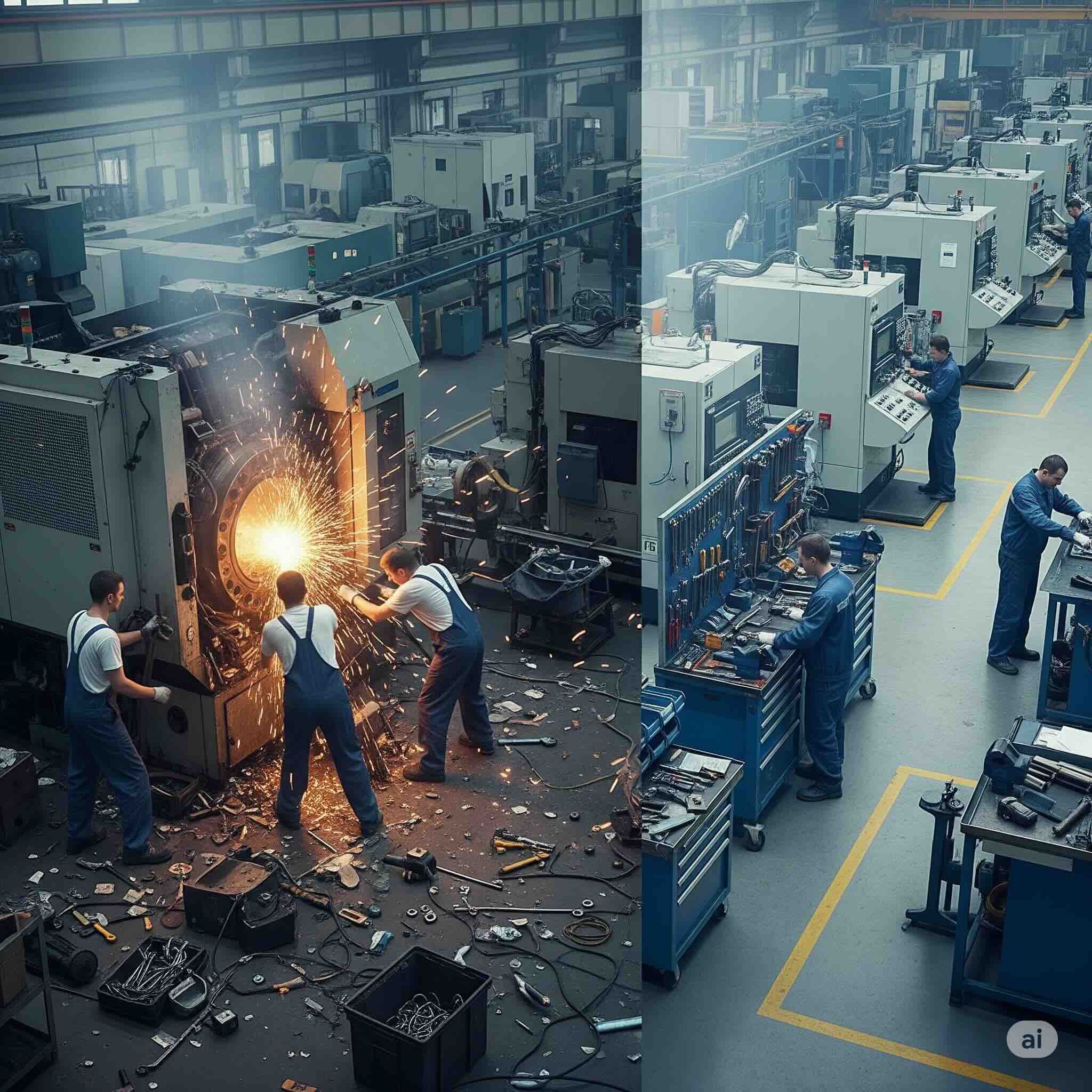From Reactive to Proactive: Using CMMS to Build a Maintenance Culture
Discover how to shift from reactive to proactive maintenance using CMMS, fostering a strong maintenance culture in your organization.
MaintainNow Team
July 23, 2025

In the fast-paced world of industrial operations, maintenance is often viewed as a necessary evil. Many organizations still operate on a reactive maintenance model, addressing issues only after they arise. However, this approach can lead to costly downtime and safety hazards. It’s time to shift gears. In my experience, transitioning from reactive to proactive maintenance is not just a strategy; it's a necessity for businesses that want to thrive. The key to this transformation lies in adopting a robust Computerized Maintenance Management System (CMMS), which can help you build a strong maintenance culture.
In this blog post, we'll explore how to leverage CMMS to foster a proactive maintenance environment. We’ll discuss the importance of safety protocols, the role of Key Performance Indicators (KPIs), effective maintenance planning, preventive maintenance, and condition monitoring. Let’s dive in!
Understanding the Reactive Maintenance Trap
Reactive maintenance may seem cost-effective at first glance, but it can lead to a host of problems. Equipment failures can cause unplanned downtime, which is often far more expensive than planned maintenance. I’ve seen companies lose thousands of dollars due to equipment breakdowns that could have been prevented with a proactive approach.
Take, for example, a manufacturing facility that relied solely on reactive maintenance. When a critical machine broke down, production came to a halt. The immediate response involved scrambling to find replacement parts and technicians, leading to delays and further losses. This scenario illustrates a common pitfall: the lack of foresight in maintenance planning.
On the flip side, organizations that adopt a proactive maintenance culture can avoid these pitfalls. By implementing a CMMS, businesses can track equipment health, schedule preventive maintenance, and ultimately foster a culture of care and responsibility towards assets.
Building a Maintenance Culture with CMMS
Creating a maintenance culture means instilling the belief that maintenance is a vital part of operations. A CMMS can help you achieve this by providing visibility, accountability, and actionable insights. Here’s how:
1. Establishing Safety Protocols
Safety should always be a priority in any maintenance strategy. A CMMS can help you document and enforce safety protocols, ensuring that employees are aware of the necessary procedures when operating or maintaining equipment.
In my experience, organizations that prioritize safety protocols see fewer workplace accidents and injuries. For instance, a warehouse I worked with used their CMMS to track safety training for maintenance staff. By ensuring that all employees were up to date on safety protocols, they reduced incidents significantly.
2. Leveraging KPIs for Continuous Improvement
Key Performance Indicators (KPIs) are essential for measuring the effectiveness of your maintenance operations. A good CMMS allows you to define, track, and analyze KPIs that matter to your organization.
Common KPIs include Mean Time Between Failures (MTBF), Mean Time to Repair (MTTR), and overall equipment effectiveness (OEE). By regularly reviewing these metrics, you can identify trends and areas for improvement. I once helped a facility implement KPI tracking through their CMMS, leading to a 30% reduction in downtime within six months.
3. Effective Maintenance Planning
Maintenance planning is crucial for ensuring that resources are used efficiently. A CMMS provides tools to help you schedule maintenance activities, allocate resources, and manage inventory.
For example, let’s say you have a fleet of vehicles that require regular servicing. With a CMMS, you can set up automated alerts for when each vehicle is due for maintenance based on mileage or time intervals. This proactive planning minimizes the risk of unexpected breakdowns, enhances vehicle reliability, and ultimately saves costs.
4. Emphasizing Preventive Maintenance
Preventive maintenance is the cornerstone of a proactive maintenance culture. It involves regular inspections and maintenance tasks designed to prevent equipment failures before they occur.
With a CMMS, you can automate preventive maintenance schedules, ensuring that tasks are completed on time. In one case, I worked with a production facility that implemented a preventive maintenance program through their CMMS. As a result, they experienced a 40% reduction in equipment failures over a year.
5. Condition Monitoring for Predictive Maintenance
Condition monitoring takes preventive maintenance a step further by utilizing real-time data to predict when equipment is likely to fail. By integrating condition monitoring into your CMMS, you can keep an eye on critical equipment health indicators, such as temperature, vibration, and fluid levels.
I recall a manufacturing plant that employed condition monitoring through their CMMS. By analyzing data trends, they were able to predict a potential motor failure weeks in advance and replace it before it caused any downtime. This predictive approach not only minimized disruptions but also extended the life of their equipment.
Conclusion: Embracing a Proactive Maintenance Mindset
Transitioning from a reactive to a proactive maintenance culture is not just about implementing a new software tool; it’s about changing the mindset of your organization. A CMMS, like MaintainNow, can be your partner in this journey, helping you prioritize safety protocols, track KPIs, plan maintenance activities, engage in preventive maintenance, and utilize condition monitoring.
As maintenance professionals, we have the unique opportunity to shape how our organizations view maintenance. By fostering a culture that values proactive strategies, we can enhance operational efficiency, improve safety, and ultimately contribute to the bottom line.
If you’re ready to take the leap and transform your maintenance culture, consider exploring MaintainNow as a leading CMMS solution. Its user-friendly interface and robust features can help you implement the strategies we’ve discussed effectively.
Remember, the shift from reactive to proactive maintenance starts with you. Embrace the change, leverage technology, and watch your organization thrive.
